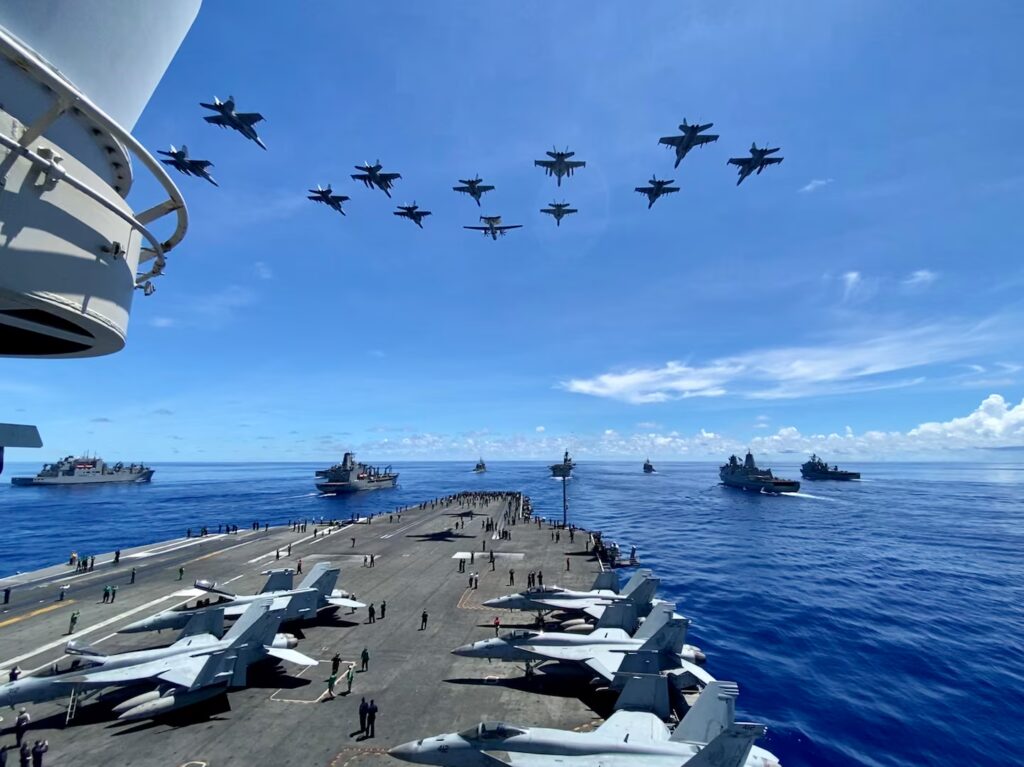As global power dynamics continue to shift, the Indo-Pacific region has emerged as the central stage for strategic competition. With China’s growing military assertiveness, North Korea’s persistent threats, and regional instability threatening key maritime routes, calls are intensifying for the creation of a formal Pacific Defense Pact—a multilateral security alliance that would mirror NATO’s role in Europe.
The Strategic Urgency
The urgency stems from the accelerating militarization of the South China Sea, frequent incursions into Taiwanese airspace, and China’s increasingly aggressive posture toward neighboring countries such as the Philippines, Vietnam, and Japan. In April alone, the Chinese Coast Guard reportedly fired water cannons at Philippine vessels near Second Thomas Shoal, sparking outrage and renewed security talks in Manila and Tokyo.
While the United States maintains bilateral defense agreements with countries like Japan, South Korea, and Australia, there is no unified regional security framework capable of coordinating collective defense or deterrence. In the absence of a multilateral structure, critics argue that individual nations are left vulnerable and overdependent on U.S. military guarantees.
A Blueprint for Deterrence
A Pacific Defense Pact, supporters argue, would serve several purposes. First, it would formalize mutual defense obligations among member states, raising the cost of aggression for any potential adversary. Second, it would enable joint training, intelligence sharing, and technology cooperation, particularly in areas such as missile defense, cyber warfare, and maritime surveillance. Third, it could act as a political deterrent—presenting a unified front that would discourage coercion by regional powers.
Advocates envision the participation of countries such as the United States, Japan, South Korea, Australia, the Philippines, New Zealand, and potentially India and Vietnam. While not all of these nations are traditional treaty allies, their shared concerns about Chinese expansionism and commitment to a rules-based order provide common ground.
Challenges Ahead
However, creating such a pact would not be easy. Unlike Europe post-WWII, the Pacific region is more fragmented, with diverse political systems, security priorities, and historical grievances. For instance, lingering distrust between South Korea and Japan continues to complicate trilateral cooperation with the U.S.
There is also the question of China’s likely response. Beijing has long viewed NATO-style alliances in Asia as direct containment strategies. A formal defense bloc in the Pacific would undoubtedly provoke diplomatic and economic retaliation, and might even accelerate regional militarization.
Moreover, some Southeast Asian nations prefer to remain neutral or non-aligned, fearing entanglement in great-power conflicts. ASEAN, for instance, has resisted becoming part of any formal military alliance, favoring dialogue and economic engagement over confrontation.
A Regional Shift
Still, recent developments suggest momentum is building. In March 2025, Australia hosted high-level defense talks that included Japan, the Philippines, and South Korea. A joint communiqué called for “enhanced collective preparedness” and the exploration of “shared security structures” in the Indo-Pacific. Meanwhile, the U.S. has announced plans to establish a rotating troop presence in the Philippines and expand joint naval patrols with regional partners.
Japan’s defense budget has reached record levels, and South Korea recently agreed to integrate some of its early-warning systems with U.S. Indo-Pacific Command. All these steps point toward a growing willingness to cooperate more deeply in the face of shared threats.
Conclusion
The case for a Pacific Defense Pact rests not on the desire for confrontation but on the recognition that peace in the Indo-Pacific requires credible deterrence and structured cooperation. As global tensions rise and the costs of inaction become clearer, the region must decide whether to remain a collection of individual alliances or to stand together in defense of stability, sovereignty, and a free and open Pacific.

